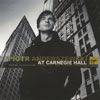Piotr Anderszewski - Carnegie Hall Recital
A thrilling performance before an enthusiastic New York audience
View record and artist detailsRecord and Artist Details
Composer or Director: Ludwig van Beethoven, Johann Sebastian Bach, Leoš Janáček, Robert Schumann, Béla Bartók
Label: Virgin Classics
Magazine Review Date: 8/2009
Media Format: CD or Download
Media Runtime: 0
Mastering:
Stereo
DDD
Catalogue Number: 267291-2

Tracks:
| Composition | Artist Credit |
|---|---|
| (6) Partitas, Movement: No. 2 in C minor, BWV826 |
Johann Sebastian Bach, Composer
Johann Sebastian Bach, Composer Piotr Anderszewski, Piano |
| Faschingsschwank aus Wien |
Robert Schumann, Composer
Piotr Anderszewski, Piano Robert Schumann, Composer |
| In the mists |
Leoš Janáček, Composer
Leoš Janáček, Composer Piotr Anderszewski, Piano |
| Sonata for Piano No. 31 |
Ludwig van Beethoven, Composer
Ludwig van Beethoven, Composer Piotr Anderszewski, Piano |
| (3) Hungarian folksongs from the Csík district |
Béla Bartók, Composer
Béla Bartók, Composer Piotr Anderszewski, Piano |
Author: Rob Cowan
Faschingsschwank aus Wien launches with a flourish: Anderszewski fractionally delays the opening’s second chord in authentic Viennese style, while the Scherzo is full of telling though effective emphases, mostly along the lines of “question and answer”. And yet in the ravishing Intermezzo I felt rather too aware of the notes (so many to negotiate): here Richter and Michelangeli remain sovereign. The finale works best, a fantastical sojourn dazzlingly negotiated.
Janácek’s In the Mists is a given a peach of a performance, a sense of improvisation sitting securely at its heart. Each movement tells its own very personal story, or seems to, the third alternating idyll with searing drama. If you need convincing of Anderszewski’s interpretative genius beam up 1'30" into the final movement where a lamenting oration prompts flooding cascades. Anderszewski’s mastery of simultaneously varied dynamics comes into play here but in Beethoven’s Op 110 he can be just a little over-emphatic on detail – in particular the accompaniment that underpins the first movement’s principal theme, from around 2'52". I’m assuming that a member of the audience took the first two of the finale’s repeated G major chords to signal closure – you hear what sound like a couple of very distant claps at around 9'35" into track 7 (disc 2). In fact, throughout the recital the understandably enthusiastic Carnegie Hall audience is rather too keen to bound in at the end of each piece, a mild distraction on a recording that you hope to play again and again. Which you will, mark my words – and my quibbles are really only for the hyper-fussy. As I’ve already suggested, this is an exceptional recital, and as ever the Carnegie Hall acoustic allows for a luminous piano tone. By the way, the folky Bartók encore is pure delight.
Discover the world's largest classical music catalogue with Presto Music.

Gramophone Digital Club
- Digital Edition
- Digital Archive
- Reviews Database
- Full website access
From £8.75 / month
Subscribe
Gramophone Full Club
- Print Edition
- Digital Edition
- Digital Archive
- Reviews Database
- Full website access
From £11.00 / month
Subscribe
If you are a library, university or other organisation that would be interested in an institutional subscription to Gramophone please click here for further information.




